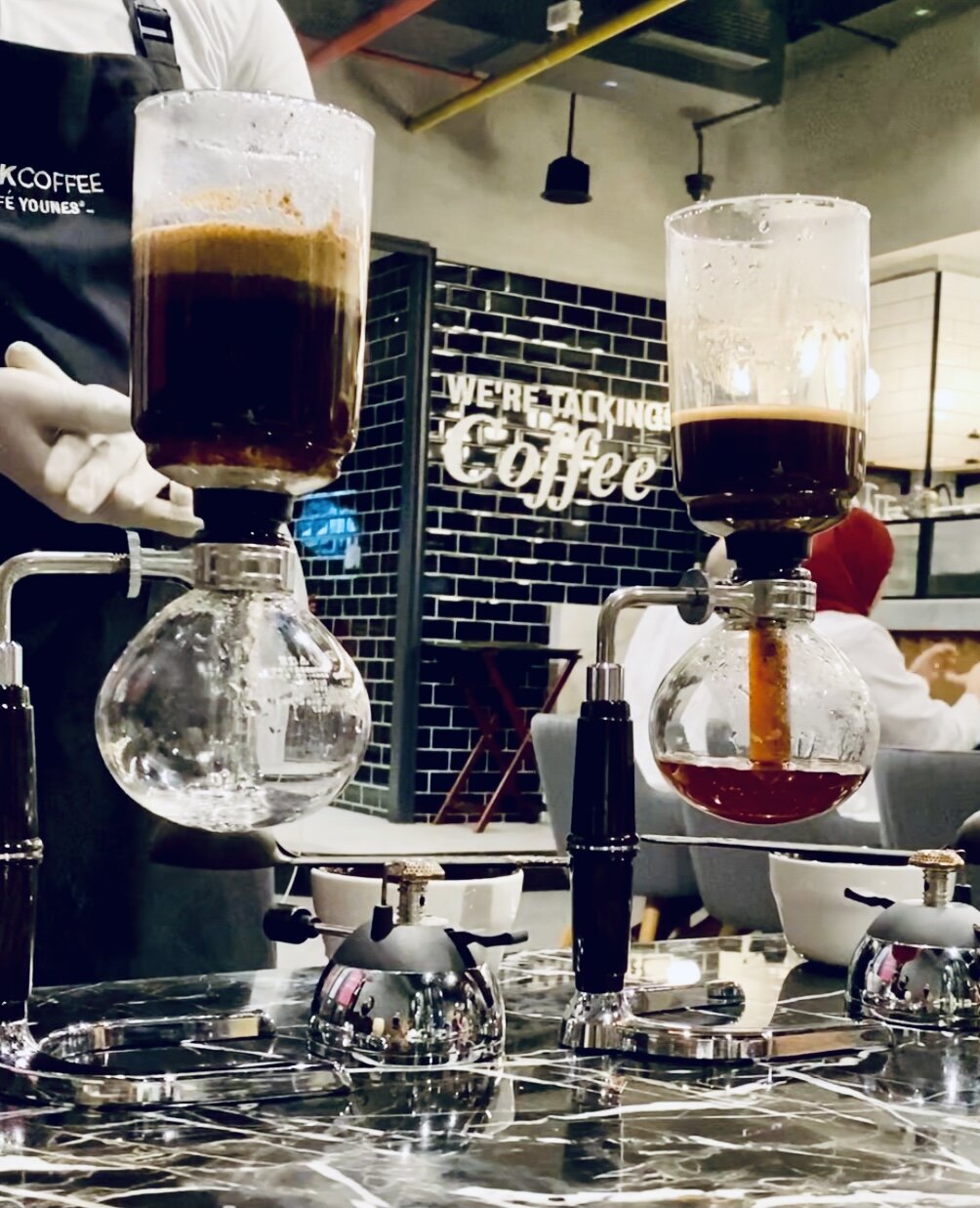Siphon Coffee Maker: Immersive Immersion Experience
Siphon Coffee x 2 at Black Coffee by Cafe Younes
I was introduced to my first cup of Siphon in 2019. I remember vaguely that it was an Ethiopia because of the intense floral and fruity notes and a nice juicy body. It is probably one of the coolest brew methods today after espresso of course. You can’t beat watching the extraction from a bottomless portafilter.
The Siphon brewer was invented in the 1840s. It uses heat, pressure and vacuum to brew coffee. That might sound simple but the brewing method itself is quite simple. Siphon uses the immersion method of brewing. There are effectively two types of brewing methods: percolation and immersion.
In the immersion method, the coffee is submerged in water for a certain period of time before filtering the grounds out. Brewers that use this method are the french press, Aeropress, Cold Brew etc. Pour overs use the percolation method, which I don’t need to explain I think.
For the Siphon, you get the body associated with the total immersion method but you also get a cleaner tasting cup similar to filter coffee. Setting up a siphon is a little finicky but once set-up, brewing on it is a breeze.
The recipe is pretty straight forward, the golden ration 1:15 is used here. Total brewing time will be 2 mins 30 seconds to 3 mins. Brewing for a longer time can adversely affect the taste of the coffee, and I would try sticking to the brew time as above.
Let’s take a closer look on how to brew on a siphon:
Presoak the filter in hot water. Place it at the bottom of the top glass beaker aka hopper. The filter has a chain that needs to be attached to the bottom of hopper’s glass tube.
The bottom round beaker is called the bulb. Be sure to measure and fill the bulb with 300g of water.
Insert the hopper into the bulb, and make sure it is secured in it’s place. Position a flame or any other prescribed heat source below the bulb to heat the water.
As the water in the bulb is being heated, some of it will start to rise up to the hopper because of the vapor pressure. It will be near boiling temperature, roughly 90 degrees C. You will notice some amount of water still at the bottom of the bulb.
Recommended grind size for the siphon is medium-coarse similar to Chemex. You will need 20g of coffee if serving one person.
Add this coffee to the hopper, and make sure all of the grounds are immersed in the water. Let it brew for the next 1 minute and 30 seconds.
Remove the heat source and stir the blend in the hopper 10 times.
As the bulb cools down, it will change the temperature around it, creating a vacuum pulling the brew down through the filter.
Don’t drink it right away as you will burn your tongue and those precious taste buds on top of it. Give it a few minutes and enjoy the complexity. If you mess up the siphon, you will know because it will taste like burnt coffee. If it’s done well, the bright notes will be accentuated with a nice syrupy body.
The above method is the American method and most used from what I have seen in the UAE. In the Japanese method, the ground coffee is placed into the hopper before heating the water in the bulb. There are other intricacies differentiating between the two methods like the stirring and draw down time, but both produce great coffees regardless.
I have had some really great Siphon coffee at Black Coffee by Cafe Younes and Drop at The Dubai Mall. What other cafes will you add to this list? Let me know in the comments section below.

